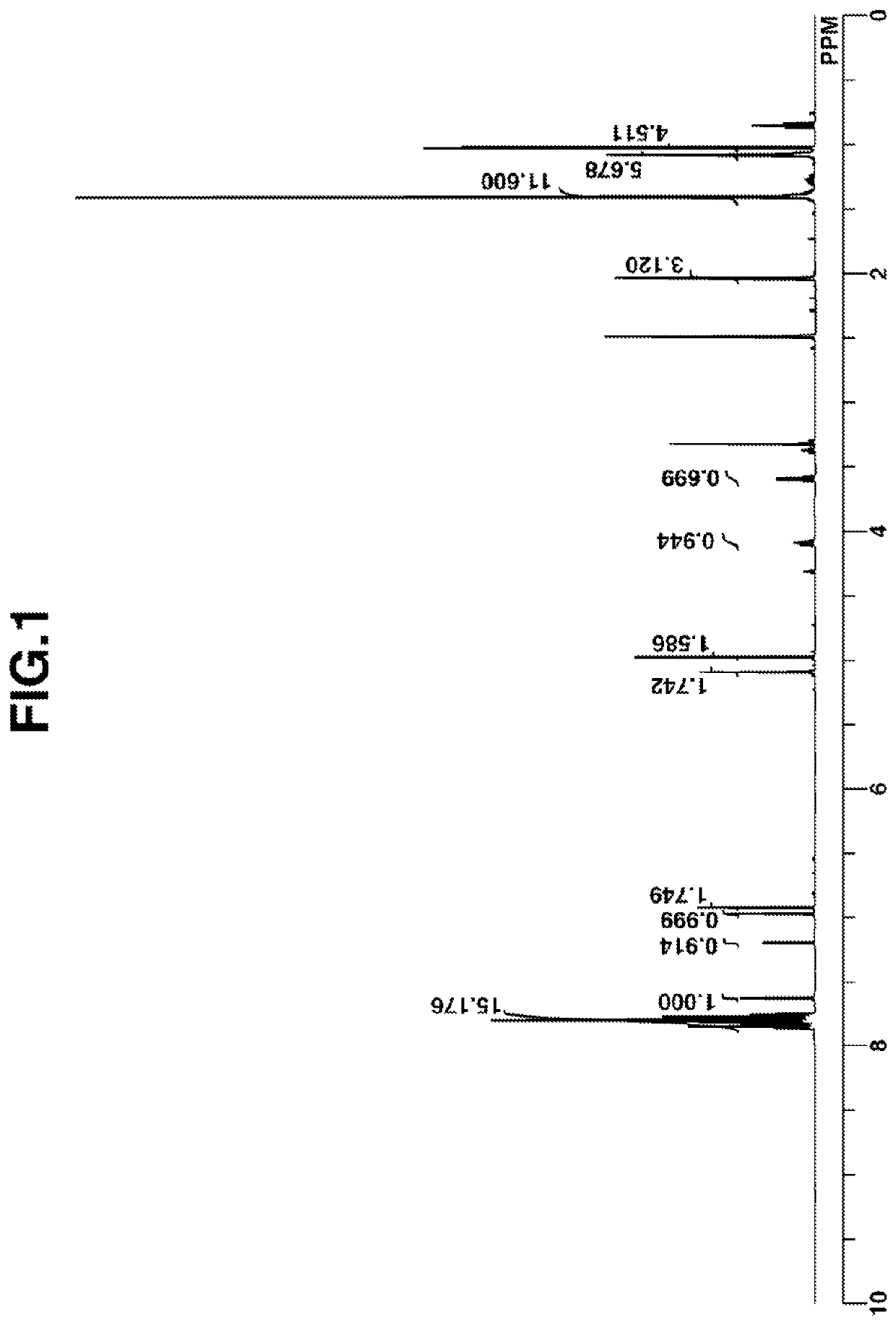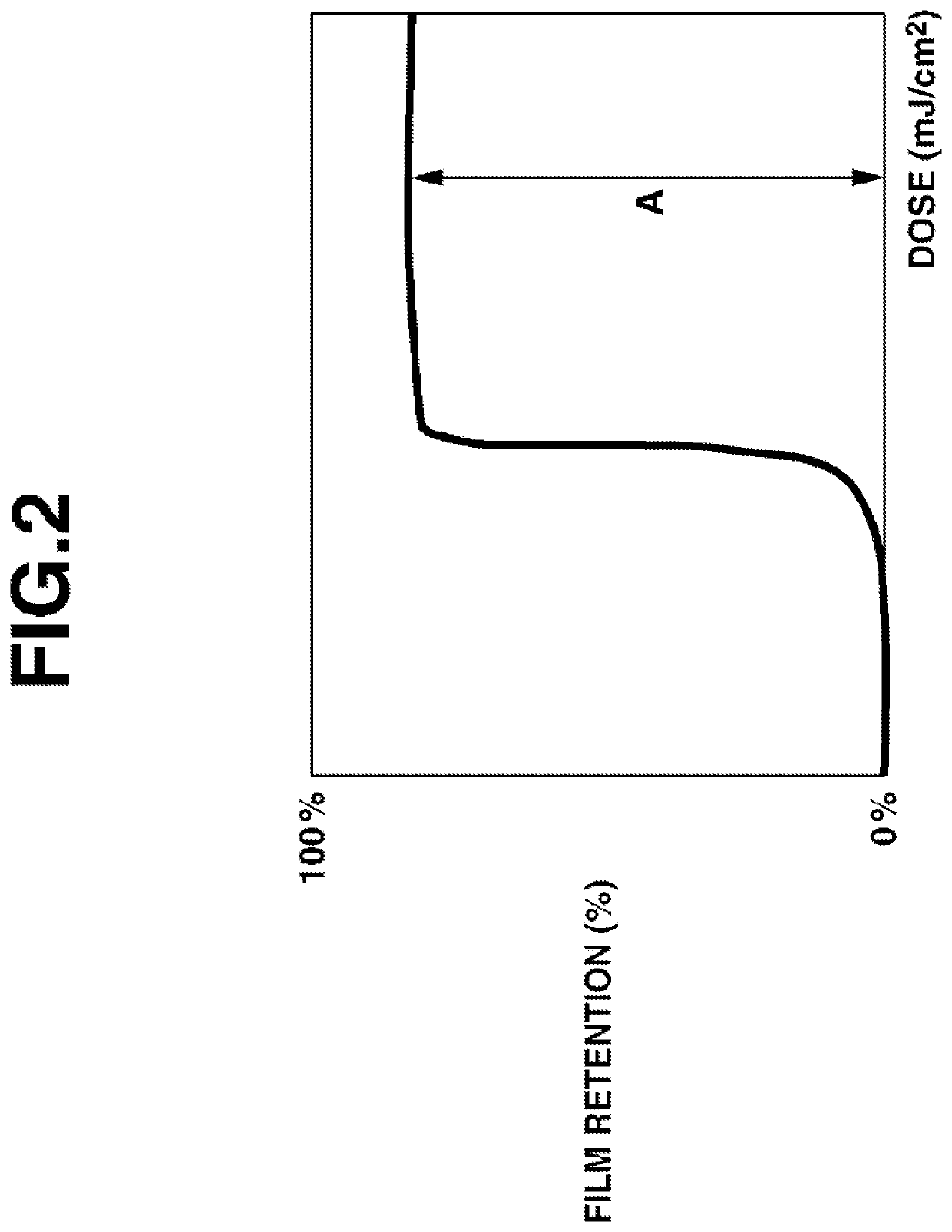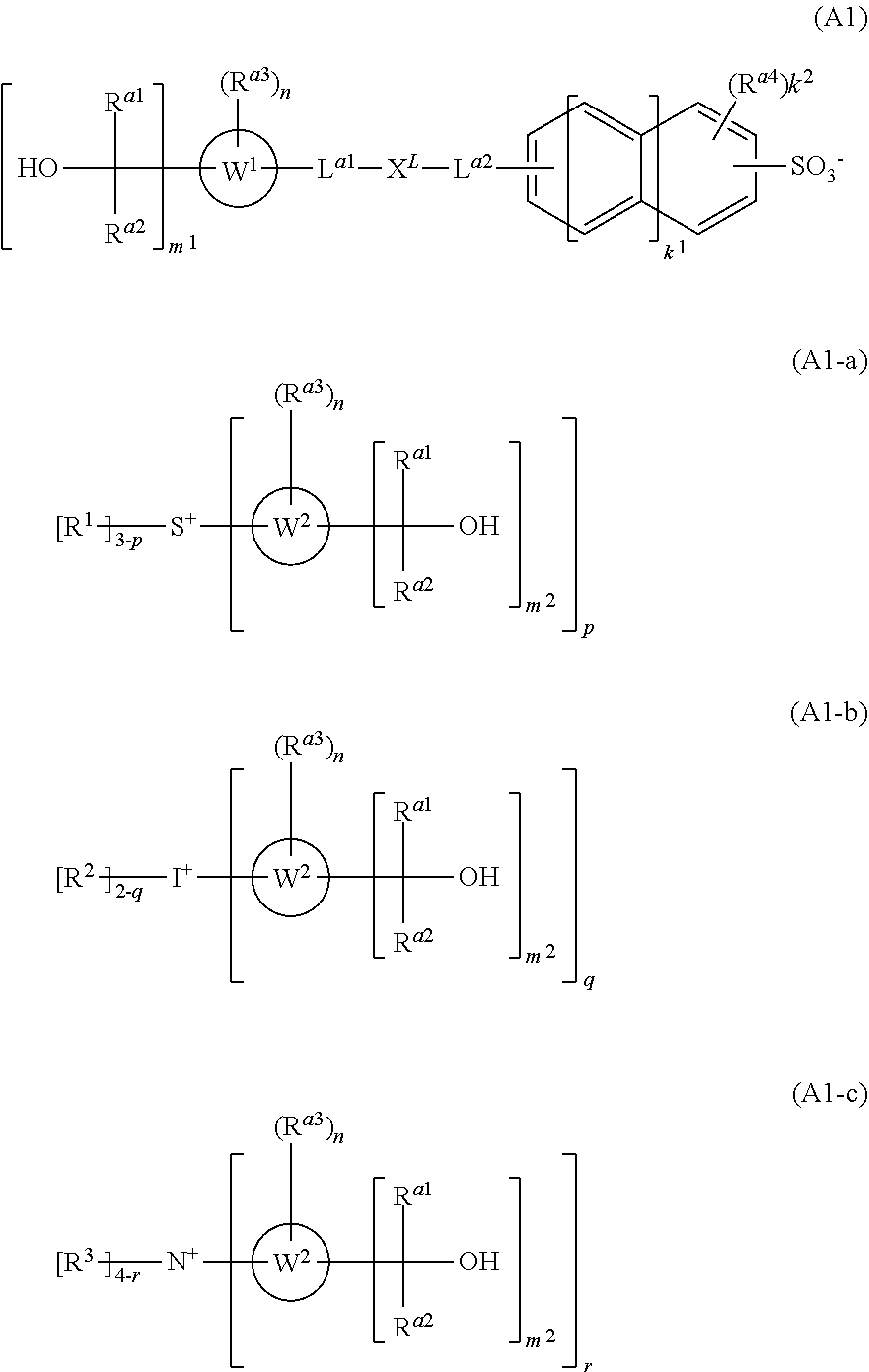Onium salt, chemically amplified negative resist composition, and pattern forming process
a technology of negative resist and composition, applied in the field of onium salt, chemically amplified negative resist composition, and pattern forming process, can solve the problems of pattern top loss, pattern top loss and degradation of lwr or cdu, serious problem, etc., and achieve high insolubilizing ability, high dissolution contrast, and improved dissolution contrast between exposed and unexposed regions
- Summary
- Abstract
- Description
- Claims
- Application Information
AI Technical Summary
Benefits of technology
Problems solved by technology
Method used
Image
Examples
example 1-1
[0193]Synthesis of PAG-1
(1) Synthesis of Intermediate In-1
[0194]
[0195]In nitrogen atmosphere, a flask was charged with 145.9 g (6 equivalents relative to M-1) of magnesium, 3,000 g of THF, and chloromethane, from which a Grignard reagent was prepared. A solution of 210 g of M-1 in 500 g of THF was added dropwise to the flask at a temperature of 40-55° C. (internal temperature, hereinafter). At the end of addition, the solution was aged at an internal temperature of 50° C. for 3 hours. After aging, the reaction system was cooled, whereupon an aqueous solution of 600 g of ammonium chloride and 1,800 g of 3.0 wt % hydrochloric acid aqueous solution was added dropwise to quench the reaction. This was followed by extraction with 2,000 mL of ethyl acetate, ordinary aqueous work-up, solvent distillation, and recrystallization from hexane. There was to obtained an Intermediate In-1 as white crystals (amount 172.2 g, yield 82%).
(2) Synthesis of Intermediate In-2
[0196]
[0197]In nitrogen atmosp...
examples 1-2 to 1-14
, Comparative Examples 1-1 to 1-3 and Reference Examples 1-1 to 1-2
Synthesis of PAG-2 to PAG-14, cPAG-1 to cPAG-3, PAG-A, and PAG-B
[0208]Onium salts PAG-2 to PAG-14 and cPAG-1 to cPAG-3 were synthesized by well-known organic synthesis methods. Also, PAG-A and PAG-B which were used in a complementary manner for improving solubility in the developer were synthesized. PAG-2 to PAG-14, cPAG-1 to cPAG-3, PAG-A and PAG-B have the structure shown below.
[2] Synthesis of Polymers
synthesis example 1
[0209]Synthesis of Polymer P-1
[0210]A 3-L flask was charged with 301.8 g of 4-acetoxystyrene, 190.7 g of acenaphthylene, 513 g of a 55.8 wt % solution of 4-ethenyl-α,α-dimethylbenzenemethanol in PGMEA, and 814 g of toluene solvent. The reactor was cooled at −70° C. in nitrogen atmosphere, after which vacuum pumping and nitrogen flow were repeated three times. The reactor was warmed up to room temperature, whereupon 40.5 g of 2,2′-azobis(2,4-dimethylvaleronitrile) (V-65 by Fuji Film Wako Pure Chemical Industries, Ltd.) was added as polymerization initiator. The reactor was heated at 45° C., whereupon reaction ran for 20 hours. The temperature was raised to 55° C., at which reaction ran for a further 20 hours. The reaction solution was concentrated to ½ in volume and poured into 7,000 g of hexane for precipitation. The precipitate was filtered and dried in vacuum at 40° C., yielding a white solid.
[0211]The white solid was dissolved in a mixture of 300 g of methanol and 900 g of THF ag...
PUM
| Property | Measurement | Unit |
|---|---|---|
| of wavelength | aaaaa | aaaaa |
| wavelength | aaaaa | aaaaa |
| reaction time | aaaaa | aaaaa |
Abstract
Description
Claims
Application Information
 Login to View More
Login to View More - R&D
- Intellectual Property
- Life Sciences
- Materials
- Tech Scout
- Unparalleled Data Quality
- Higher Quality Content
- 60% Fewer Hallucinations
Browse by: Latest US Patents, China's latest patents, Technical Efficacy Thesaurus, Application Domain, Technology Topic, Popular Technical Reports.
© 2025 PatSnap. All rights reserved.Legal|Privacy policy|Modern Slavery Act Transparency Statement|Sitemap|About US| Contact US: help@patsnap.com



